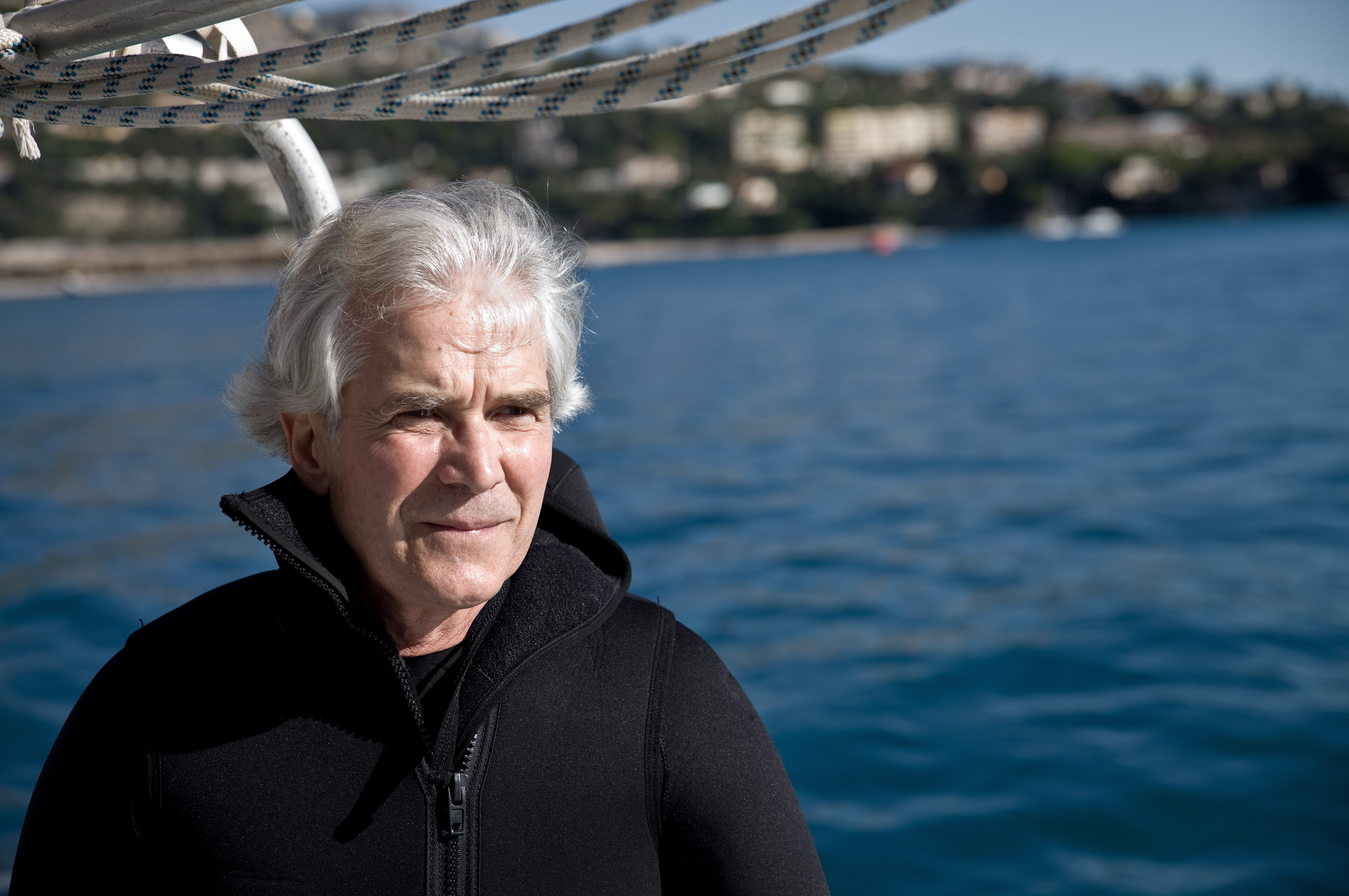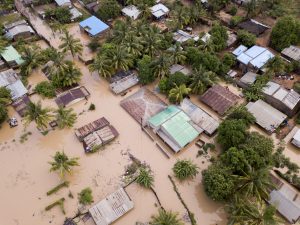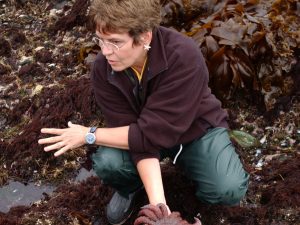The Our Shared Seas team is excited to welcome Dr. Jean-Pierre Gattuso for a conversation on the ocean-climate nexus. Dr. Gattuso is a CNRS Senior Research Scientist at Sorbonne University and the Institute for Sustainable Development and International Relations. He served as the coordinating lead author for the Special Report on the Ocean and Cryosphere in a Changing Climate released by the IPCC in September 2019. He also served as lead author for the IPCC Fifth Assessment Report released in 2014. He has published widely both on ocean solutions and on the impacts of climate change on marine organisms and ecosystems.
Listen to the interview
Interview Highlights
This is an edited version of the interview. You can download the full interview transcript here.
Welcome Dr. Gattuso.
My pleasure, thank you.
The recent report that you’ve been collaborating on, the “Special Report on the Ocean and Cryosphere in a Changing Climate” (SROCC) is the first standalone assessment by the Intergovernmental Panel on Climate Change (IPCC) which focuses specifically on the impacts of climate change on the ocean and ice. Can you provide some background on how and why the IPCC decided to elevate this topic to its own report?
There are 195 governments represented in the IPCC. At the beginning of every assessment cycle, governments are invited to provide proposals for special reports.
The IPCC can only provide a few reports in every cycle. This time the IPCC received around 30 proposals and had to decide which themes would be covered in this assessment cycle. The principality of Monaco submitted a proposal to have a special report on the oceans and climate change. This proposal was supported by several countries, including Chile, France, China and others, and there were many other proposals. In the end the IPCC in its plenary session decided to combine proposals from the ocean and the cryosphere in a single report, which makes a lot of sense because of the strong connections between the two subsystems of the planet—the ocean and the cryosphere.
At the approval session the delegates of the 195 different governments represented at the IPCC need to approve line-by-line the Summary for Policymakers (SPM), which is about 40 pages.
This is a very difficult and exhausting effort. It was supposed to be four days long and at the beginning of the fourth day, only 50 percent had been approved. We started the last day at 8 AM for a 27-hour session until 11 am the next day. But in the end, it was successful, and it’s a really important process. Once the Summary for Policymakers and the report are approved, then the governments own it. It eases the negotiations as part of the COP meetings—the Conference of the Parties to the United Nations Framework Convention on Climate Change (UNFCCC) which occur every year. Once reports approved by all governments are on the table, it’s very difficult to dismiss their findings.
There is quality control there because the governments cannot request additions to the Summary for Policymakers that are not consistent with the underlying chapters. That is extremely important. The science prevails.
Once the Summary for Policymakers and the report are approved, then the governments own it. It eases the negotiations as part of the Conference of the Parties meetings which occur every year. Once reports approved by all governments are on the table, it’s very difficult to dismiss their findings.

Dr. Jean-Pierre Gattuso
Thank you for those behind-the-scenes details. Many people just see a very large report and don’t really understand the level of depth and several years of work that goes into these processes.
I can add that it’s not a battle between authors and the governments. Many of the comments and slight changes made are very constructive, and at the end of this process the Summary for Policymakers is better than the one that was initially submitted to the governments.
The SROCC is based on a substantial body of scientific evidence—nearly 7,000 peer reviewed studies to be exact. What would you say that we know now that might not have been apparent 10 years ago, or alternatively, might have had a wider confidence interval attached to it?
The task of the IPCC is to assess as you say the literature, assess publications, and gray literature but mostly peer-reviewed literature. So it’s an assessment; it’s not a research document. That being said, of course a lot of knowledge is accumulated.
What is new—in my view—mostly the report confirms previous reports, about the warming, ocean acidification is happening and is projected to continue. Probably the most prominent conclusion of the SROCC is the revision upwards of sea level rise.
In the IPCC Fifth Assessment Report (AR5), published in 2015, the maximum sea level rise under high emissions scenario, without climate action, in IPCC terminology [Representative Concentration Pathway] (RCP) 8.5, the sea level rise was projected to be just under one meter in 2100. This report [SROCC] found that in fact the melting of Greenland and the Antarctic ice sheet has been much larger than it was projected in 2013. Therefore, sea level rise was revised upwards and now it could be up to 1.1 meter by 2100. It has risen by 10 percent which has tremendous importance for coastal populations, especially populations in low-lying areas.
Probably the most prominent conclusion of the SROCC is the revision upwards of sea level rise. This report found that the melting of Greenland and the Antarctic ice sheet has been much larger than projected in 2013. Sea level rise was revised upwards and now it could be up to 1.1 meter by 2100…this has tremendous importance for coastal populations, especially in low-lying areas.
The governments also asked to provide information on sea level rise for 2300. The report found that—there is a lot of uncertainty—but with a high emissions scenario (meaning without climate action), it will be multi-metric sea level rise at 2300, probably up to 5.1 meters. So that is quite stunning.
Importantly, the report also evaluates a low emissions scenario. In the IPCC vocabulary it’s called RCP2.6, and in this scenario, which is mostly consistent with the Paris Agreement, the sea level rise in 2300 can be limited to 1 meter. It really shows that for every variable—for warming, acidification, and so on—the changes can be dramatically lowered with climate action which is consistent with the Paris Agreement.
Ocean acidification is also a new area that has taken a lot of importance in the last 10 years. There are many new papers and projections of impacts. It is one of the new aspects in this report, too.
Thank you for highlighting those top-level findings. When we look forward, how do you hope the global community will provide a policy response to the SROCC? What would you say would be an ideal outcome from the upcoming COP25 also known as the “Blue COP” in Chile? Lastly, is there anything specific that you’re hoping to see from that meeting?
The main point is to vastly reduce greenhouse gas emissions. If we follow the objectives of the Paris Agreement to limit warming to 1.5 or 2 degrees above pre-industrial temperatures, that will be beneficial for the ocean. Certainly, as an oceanographer, I’m interested to see the ocean taken into consideration in these high-level negotiations and I’m very pleased that COP25 has been dubbed the “Blue COP.” They want to have a focus on the ocean in this meeting; that is very good news.
What I would like to see at this meeting is that the SROCC report is taken onboard; that government delegates in the negotiations consider the ocean and also the impacts that climate change has not only on the oceans, but for all the services it provides to humanity, in terms of food security, climate regulation, etc.
In the UNFCCC context, every 5 years, [countries’] Nationally Determined Contributions (NDCs) need to be revised upwards, to become more ambitious. So the next round of NDCs will be in 2020, and it is very important that at the end of 2019, the ocean is pushed into the policy world and that the NDCs use the opportunities offered by the ocean in terms of mitigation and also in terms of adaptation. So, I’d like to see the ocean reflected in the NDCs next year.
And for that it’s very important to have the ocean prominent at this COP in 2019 to make sure that it will be considered in 2020. In fact with colleagues from several countries, we are preparing a four-page policy brief that we will release in November 2019, providing the background information on how the ocean matters and could be included in the NDCs. So, this COP is a very important step in terms of fulfilling the Paris Agreement.
The next round of NDCs will be in 2020 and it is very important that at the end of 2019, that the ocean is pushed into the policy world and that the NDCs use the opportunities offered by the ocean in terms of mitigation and also in terms of adaptation.
You have published multiple articles in recent years about ocean-based solutions to address climate change. While there are inherently tradeoffs and limitations of most options, are there particular approaches that you’d highlight as representing the most promising mitigation measures?
Yes, we published in 2018, just last October, a paper on ocean-based solutions and then we turned it into a policy brief. One can also mention the report from the High Level Panel for a Sustainable Ocean Economy which also published a report on ocean-based solutions. Combined, there is a lot of information that is available for policymakers to include ocean-based solutions into the UNFCCC process.
In our study, we looked at 13 potential measures. Note that we don’t call them ‘solutions’ because some of them are not desirable [as] solutions. We looked at four categories of measures.
The first one is obvious: addressing the causes of climate change, that is the increase in greenhouse gases. So, there are two ways to look at this: mitigation can be either by reducing the sources of greenhouse gases or by increasing the sinks of greenhouse gases. Among those measures to address the causes of climate change, there is obviously marine renewable energy, marine bio-energy with carbon capture and storage, restore and increase coastal vegetation, and measures to stimulate the storage of carbon dioxide in the ocean, such as ocean fertilization for example.
The second group after addressing the causes of climate change is supporting the biological and ecological adaptation. Under this grouping we have pollution reduction, conservation—that’s marine protected areas (MPAs), and a few others such as assisted evolution, restoration and enhancement of marine ecosystems. Finally, there is, enhancing societal adaptation, and that is all measures, for example infrastructure-based adaptation to deal with sea level rise.
In the policy brief we are preparing for November 2019, we will assign those measures into different groups, like which measures are ‘decisive’—meaning that they have high effectiveness and few disbenefits; measures that are ‘low regret,’ referring to measures that are not so effective to limit climate change but have a lot of co-benefits.
One of the decisive measures is the large-scale increase in the use of marine renewable energy. The technology is here; it is already being deployed, so there is no impediment to a large-scale increase in the use of marine renewable energy.
Among the ‘low-regret’ measures, there is for example the conservation and restoration of coastal vegetation, that is mangroves, seagrass beds, and salt marshes. The reason is that those ecosystems, coastal ecosystems, sometimes called “blue carbon” ecosystems, use carbon dioxide for photosynthesis and store carbon on the ocean floor along the coast. They are very efficient carbon stores. The reason that blue carbon ecosystems do not qualify as decisive measures is because their effectiveness to limit carbon dioxide in the atmosphere is relatively small. But it has a lot of co-benefits because those ecosystems not only store carbon dioxide, but they harbor significant biodiversity, so restoring them contributes to maintaining biodiversity. That is why we refer to blue carbon ecosystems as ‘low regret.’ There is no reason not to do it, even though the effectiveness to limit climate change and its impacts are very limited.
One of the decisive measures is the large-scale increase in the use of marine renewable energy. The technology is here; it is already being deployed, so there is no impediment to a large-scale increase in the use of marine renewable energy.
You also mentioned MPAs as a low-regret option for climate change. Can you talk about why MPAs, specifically, are a low-regret option and what opportunities there are for countries to use them as a climate adaptation measure?
Yes, absolutely. In our study, we assessed Marine Protected Areas because, there is evidence that organisms and ecosystems in MPAs are more resilient to climate change. The ocean and organisms and ecosystems are subject to a large range of drivers, sometimes called stressors. Climate change is one stressor but there is also pollution, overexploitation, the use of those ecosystems for tourism, etc. When you limit, in a protected area, those other stressors significantly, those systems are more resilient to climate change. But there are limits. If nothing is done on climate change, MPAs are not going to save the ocean. But it’s a good way, combined with other measures, to try to limit the impacts of climate change.
It seems to be a theme that the measures need to be combined together to work effectively.
There is not one magic bullet solution to limit climate change and its impacts on the ocean. Obviously the main one, and it’s absolutely critical, is mitigation, decreasing the amount of carbon dioxide that is released in the atmosphere, and also absorbing some of the carbon dioxide that has already been emitted. The goal is to decrease the carbon dioxide concentration in the atmosphere. Besides that, there are much smaller measures, such as the conservation and restoration of blue carbon ecosystems, the development of MPAs, and the restoration of coral reefs. All of those solutions combined with mitigation are a great way to limit climate change and its impacts on the ocean.
There is not one magic bullet solution to limit climate change and its impacts on the ocean. Obviously the main one, and it’s absolutely critical, is mitigation, decreasing the amount of carbon dioxide that is released in the atmosphere.
Would you have any advice for philanthropic institutions that are interested in addressing the impacts of climate change on the ocean? Do you think that philanthropy can help move the needle on this issue in some way?
Absolutely. In fact, the public doesn’t realize that not only governments are important to solve this issue of climate change. There are many actors. Governments are of course important actors, but also regions, states, cities, and of course every one of us, has a role to play. Philanthropic institutions also have a big role to play, and they already play an important role. For example, the two papers you mentioned earlier were supported by two initiatives—the Oceans 2015 Initiative and the Ocean Solutions Initiative that I led. And those were besides my salary, because I am a public servant, the workshops and all the work that was done to produce those studies, was supported by foundations, including the Prince Albert II of Monaco Foundation, the Veolia Foundation, and the BNP Paribas Foundation. Philanthropic institutions are a tremendous actor, and their role could be greatly increased.
Thank you so much for sharing your time and insights with our community today. And most importantly, we appreciate all your research on behalf of our blue planet.
Thank you very much for the opportunity. I want to say that not only it is important to produce reports and that these reports are embraced by policymakers, but it’s also equally important to disseminate the findings to the public, so that the public can understand what is happening. Thank you for the opportunity.


